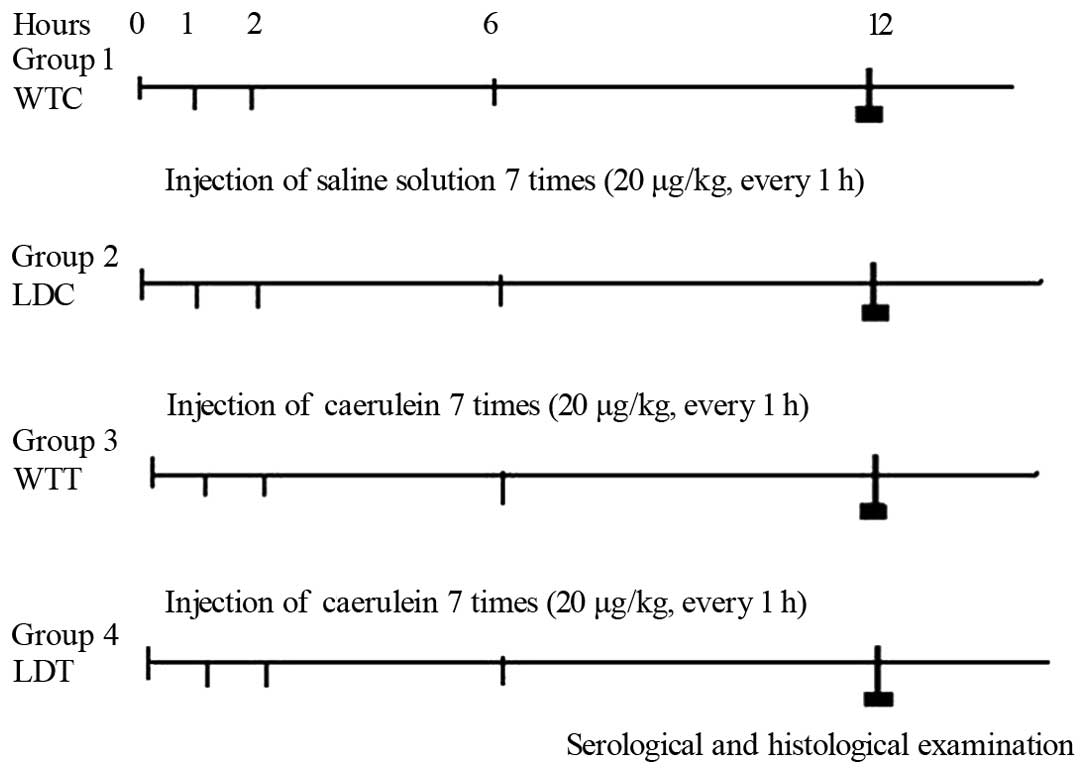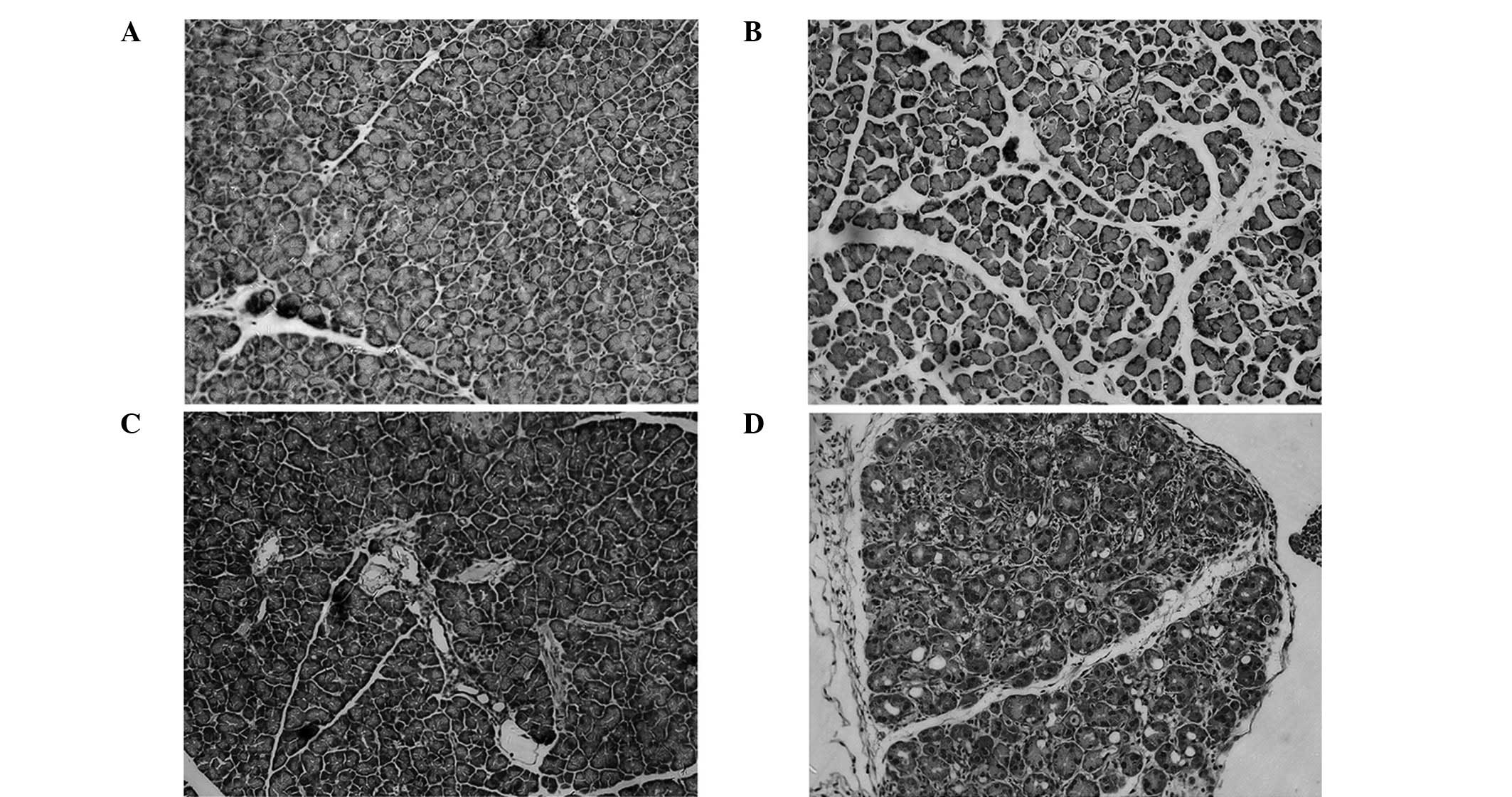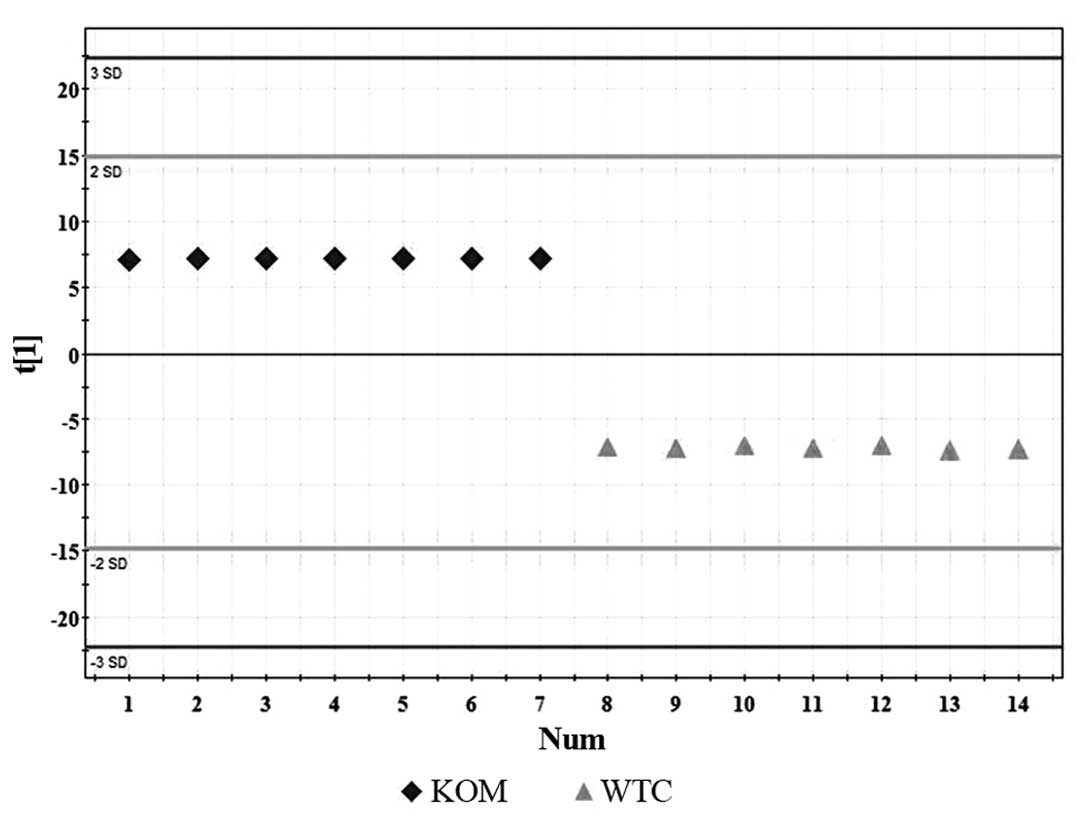A serum metabolomic investigation on lipoprotein lipase‑deficient mice with hyperlipidemic pancreatitis using gas chromatography/mass spectrometry
- Authors:
- Published online on: March 12, 2013 https://doi.org/10.3892/br.2013.78
- Pages: 469-473
Metrics: Total
Views: 0 (Spandidos Publications: | PMC Statistics: )
Total PDF Downloads: 0 (Spandidos Publications: | PMC Statistics: )
Abstract
Hypertriglyceridemia (HTG) is often associated with acute pancreatitis. The relationship between these diseases and the role that hypertriglyceridemia plays in acute pancreatitis pathogenesis remains to be elucidated. In the present study, in order to investigate the mechanisms of hyperlipidemic acute pancreatitis (HLP), we established an animal model using lipoprotein lipase (LPL)‑deficient heterozygous mice injected with caerulein. Susceptibility to pancreatitis in LPL‑deficient heterozygous mice was compared with that of wild‑type mice after intraperitoneal (i.p.) injections of caerulein by determining amylase release and pancreatic pathological scores. Furthermore, serum metabolome was detected through chemical derivatization followed by gas chromatography/mass spectrometry (GC/MS). GC/MS data were analyzed by orthogonal‑projection to latent structures‑discriminant analysis (OPLS‑DA). Caerulein induced increased levels of serum amylase and more severe pancreatic inflammation in LPL‑deficient mice compared to wild‑type mice. HLP was discriminated more accurately from healthy controls by the metabolites, including valine, leucine and citrate. The metabolites included valine, leucine, citrate, malic acid, proline, tetradecanoic acid (14:0), glutamine and oleic acid (18:1). Changes in energy, fat and amino acid metabolism were also evident. In conclusion, LPL‑deficient heterozygous mice with hypertriglyceridemia (HTG) exhibited enhanced susceptibility to acute pancreatitis. GC/MS data revealed differences between healthy and HLP mice. Therefore, this technique is novel and a useful tool for the study of the HLP pathogenetic mechanism.












